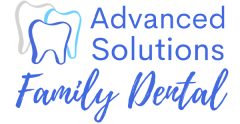Ever wonder why that delicious cup of coffee leaves unwanted stains on your teeth? This section dives into the science behind coffee stains, explaining how they form and what factors influence their severity.
The Staining Culprits: Chromogens & Tannins in Coffee
Coffee’s staining power comes from two main culprits:
- Chromogens: These colorless compounds react with saliva in your mouth to form colored molecules that stick to tooth enamel.
- Tannins: These naturally astringent plant-based compounds can adhere to the surface of your teeth, causing discoloration.
The concentration of these elements varies depending on the type of coffee bean, roast level, and brewing method.
How Coffee Stains Develop: From Surface to Enamel
Coffee stains don’t happen overnight. Here’s the breakdown of how they develop:
- Surface Stains: When you drink coffee, chromogens and tannins initially stain the pellicle, a thin protein film on your teeth.
- Brushing & Flossing Defense: Regular brushing and flossing can remove these surface stains, preventing them from setting in deeper.
- Penetration & Enamel Stains: If left unaddressed, surface stains can gradually penetrate the microscopic pores in tooth enamel, leading to more stubborn discoloration.
Factors Affecting Stain Severity: Coffee Type, Brushing Habits
Several factors influence how noticeable coffee stains become:
- Coffee Type: Darker roasts generally contain higher levels of chromogens and tannins, leading to more intense staining.
- Brushing Habits: Frequent brushing with a whitening toothpaste helps remove surface stains and prevent deeper penetration.
- Saliva Production: Low saliva flow can reduce the natural cleansing action in your mouth, allowing stains to develop more easily.
- Smoking & Tobacco Use: Smoking and chewing tobacco can worsen coffee stains and overall tooth discoloration.
- Genetics: Some people are naturally more prone to developing enamel stains due to variations in tooth enamel composition.
By understanding these factors, you can develop a personalized strategy to combat coffee stains and maintain a bright smile.
Conquering Coffee Stains: Effective Removal Methods
Now that you understand the science behind coffee stains, let’s explore various methods to remove them and reclaim your sparkling smile.
Daily Defense: Brushing & Flossing with Whitening Toothpaste
Brushing your teeth twice a day and flossing once daily is the foundation for preventing and removing coffee stains. Here’s how to maximize this essential practice:
- Choose a Whitening Toothpaste: Look for toothpaste containing baking soda, hydrogen peroxide, or gentle polishing agents that can help remove surface stains.
- Brushing Technique Matters: Use a soft-bristled toothbrush and employ a gentle circular motion, brushing for two minutes to reach all tooth surfaces.
- Don’t Forget Flossing: Flossing removes plaque and debris between teeth, where coffee stains can easily hide.
While this daily routine might not dramatically whiten teeth, it’s a crucial first step to prevent coffee stains from setting in.
Natural Powerhouse: Baking Soda & Hydrogen Peroxide Paste (Caution & Usage Instructions)
For an at-home whitening boost, many people turn to baking soda and hydrogen peroxide paste. Here’s how to use it with caution:
- Mix a small amount (½ teaspoon) of baking soda with a few drops of 3% hydrogen peroxide to create a thick paste.
- Apply the paste to your toothbrush and gently brush your teeth for one minute, focusing on stained areas.
- Rinse thoroughly with water and brush again with your regular toothpaste.
Important Cautions:
- Don’t overuse: This method can be abrasive. Use it once or twice a week at most.
- Sensitive Teeth: If you have sensitive teeth, this might cause discomfort. Consider alternative methods.
- Enamel Erosion: Excessive use can erode tooth enamel. Use sparingly and consult your dentist if concerned.
For a gentler approach, some drug stores offer pre-made whitening pastes containing baking soda or similar ingredients.
Over-the-Counter Solutions: Whitening Strips & Rinses (Brand Examples & ADA Seal)
Over-the-counter whitening products offer a convenient way to whiten your teeth at home. Here are two popular options:
- Whitening Strips: These adhesive strips, coated with a whitening agent (often hydrogen peroxide or carbamide peroxide), adhere to your teeth for a designated time. Popular brands include Crest Whitestrips and Rembrandt Whitening Strips. Look for products with the American Dental Association (ADA) Seal of Acceptance for safety and effectiveness.
- Whitening Rinses: These mouthwashes contain low concentrations of whitening agents that can help remove surface stains and brighten your smile with regular use. Examples include Listerine Whitening Rinse and Colgate Optic White Mouthwash. Remember, rinses are not as effective as strips or other treatments for deeper stains.
Choosing the Right Option:
- Consider the severity of your stains. Strips might be better for moderate stains, while rinses offer a more subtle approach for mild discoloration.
- Sensitivity is a concern for some people. Look for products formulated for sensitive teeth.
- Talk to your dentist near you for personalized recommendations based on your oral health and desired results.
Professional Care: In-Office Whitening Treatments (Types & Cost)
For the most dramatic whitening results, especially for stubborn coffee stains, professional in-office treatments are the gold standard. Here’s a breakdown of two common options:
- Chairside Whitening: This treatment involves applying a powerful bleaching agent to your teeth, often activated by a light source. The dentist monitors the process and achieves significant whitening results in a single visit. Costs can vary depending on location and dentist but typically range from $300 to $800.
- Laser Whitening: Similar to chairside whitening, this technique uses a laser to activate the bleaching agent. Laser whitening might be faster and offer slightly better results, but it’s also often more expensive, ranging from $400 to $1000 or more.
Benefits of Professional Whitening:
- Dramatic Results: Professional treatments can achieve significantly whiter teeth compared to at-home methods.
- Safe & Effective: Dentists use controlled procedures and monitor the process for optimal results with minimal risk.
- Customizable: Your Oak Forest dentist can tailor the treatment to your specific needs and desired level of whitening.
Things to Consider:
- Cost: Professional treatments are more expensive than over-the-counter options.
- Sensitivity: Some people experience temporary tooth sensitivity after whitening. Discuss this with your dentist in Oak Forest beforehand.
- Maintenance: Professional whitening results are not permanent. Regular brushing, flossing, and touch-up treatments might be needed to maintain your white smile.
Consult your dentist to discuss the best professional whitening option for your needs and budget. They can assess your oral health and recommend the most suitable approach for achieving a brighter smile.
Preventing Coffee Stains: Maintain Your White Smile
Conquering coffee stains is one battle won, but the real victory lies in preventing them from becoming a persistent issue. This section explores strategies to keep your smile bright and coffee stain-free.
Strategic Sipping: Using Straws & Rinsing with Water
Simple adjustments to your coffee routine can significantly reduce coffee stain formation:
- Straw Power: Sipping coffee through a straw minimizes contact with your teeth, preventing staining agents from reaching the tooth surface.
- Water Rinse: Rinsing your mouth with water after each sip of coffee helps wash away lingering coffee particles and reduces stain development.
These tactics are easy to incorporate and can make a big difference in maintaining a whiter smile.
Dietary Choices: Limiting Dark-Colored Foods & Beverages
While coffee might be the main culprit, other dietary choices can also contribute to tooth discoloration. Here’s how to make smart choices:
- Minimize Stainers: Reduce your intake of dark-colored foods and beverages like red wine, berries, soy sauce, and curries, as they can stain teeth.
- Color-Conscious Snacking: Choose crunchy fruits and vegetables like apples, carrots, and celery. These act as natural tooth cleansers by promoting saliva production and friction that helps remove surface stains.
Being mindful of what you consume can go a long way in preventing coffee stains from becoming a bigger problem.
Regular Dental Checkups & Cleanings (Importance of Professional Care)
Regular dental checkups and cleanings are crucial for maintaining good oral health and preventing coffee stains. Here’s why:
- Professional Cleaning Power: Dentists can remove deep-seated stains with professional cleaning tools and techniques that are not achievable at home.
- Early Detection & Prevention: Your dentist can identify potential problems like enamel erosion or gum disease that could worsen coffee stain visibility.
- Personalized Advice: Dentists can assess your individual needs and recommend the best at-home care routine and whitening treatments to maintain a bright smile.
Scheduling regular dental visits is an investment in your overall oral health and a key element in preventing coffee stains from dulling your smile.
A Sparkling Smile & Coffee Harmony
Coffee doesn’t have to come at the expense of a bright smile! By combining effective stain removal methods with preventative habits, you can enjoy your favorite beverage and maintain a radiant smile. Regular checkups and cleanings by your Oak Forest dentist are essential for professional stain removal, early detection of potential issues, and personalized advice for a healthy smile.
Frequently Asked Questions
Is Brushing with Strawberries Effective?
Brushing with strawberries is a popular internet tip for whitening teeth. However, the reality is:
- Mild Acidic Effect: Strawberries contain a mild malic acid that might offer some temporary stain-lifting properties.
- Ineffective & Abrasive: The whitening effect is minimal and temporary. The strawberry texture can also be abrasive and damage tooth enamel with regular use.
Can Natural Whiteners Damage Teeth?
Natural whiteners like baking soda and lemon juice can be tempting options, but safety is a concern:
- Baking Soda (Safe with Caution): Baking soda is generally safe in small amounts, but overuse can erode enamel. Use a baking soda paste sparingly and consult your dentist for guidance.
- Lemon Juice (Not Recommended): Lemon juice is highly acidic and can severely damage tooth enamel. Avoid using it for whitening purposes.
How Often Can I Use Whitening Treatments?
The frequency of using whitening treatments depends on the method:
- Whitening Toothpaste: Use daily for a gentle whitening effect.
- At-home Whitening Strips: Follow the recommended frequency on the product (usually daily or every other day for a specific period).
Professional Whitening: Consult your dentist for personalized recommendations based on the treatment type and desired results.

